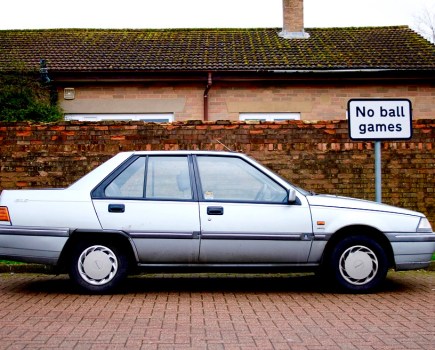Many owners of classic vehicles are still ignoring the dangers of elderly tyres. With pre-1960 cars no longer being checked by qualified MoT testers by law, could the problem get worse? With many classics clocking up fewer than 1000 miles a year, tyres are much more likely to degrade than wear out.
Stuart Jackson, chairman of safety organisation Tyresafe told us: “When tyres are not used for a prolonged period, cracks or grazing can appear in the sidewall, tread or shoulder areas of the tyre which can let in moisture and affect the structural integrity of the tyre. This process can be accelerated if the tyres are exposed to UV light or other harsh conditions such as rain or coastal air.”
Even if you don’t drive your classic particularly hard, it’s not until you find yourself in an emergency situation that a lack of grip could be an issue: That unexpected car that pulls out of a side road or that child that unthinkingly runs into the road.
This concern is backed by Mark Griffiths, communications officer for Continental Tyres. He told us: “With older tyres, which a lot of classic cars are likely to have, tyre compounds can deteriorate because of atmospheric conditions. Common failures will be things like an increased shore harness of the tread compound, which will affect the tyre’s performance and safety, especially in wet conditions.
“Tyres also naturally age over time due to the ozone and temperature. This, under extreme conditions, leads to a deterioration of the bonding between components and also general cracking to the exterior surface of the rubber compounds. These things need to be kept in mind to ensure your vehicle is road legal and safe to drive.”
NEW CAR, NEW TYRES?
It’s very easy to buy a car and assume the tyres are okay because they have plenty of tread. However, you need to be very wary unless you can tell how old the tyres are. Some more modern tyres have a sidewall marker that can be decoded to give the year of manufacture. Anything over seven years is getting on a bit and ten years really is a bit too long – it really isn’t just a con to get you to replace perfectly good tyres! Old tyres don’t perform as well as new ones.
The Royal Society for the Prevention of Accidents (RoSPA) warns: “In most circumstances tread depth can be used as a suitable indication of when tyres should be replaced – as tyre treads generally wear out before their age effects their performance. However, the age of a tyre will affect its safety and increase the risk of failure, and you should inspect tyres for the signs of ageing regularly.”
So, if you don’t have an idea of how old the tyres are, inspect them for signs of cracking, especially on the sidewalls.
Winter storage is another issue – one that’s now very much in mind. Tyresafe recommends: “Before placing the car into storage for the winter, it’s advised that if possible the car is jacked up and the weight removed from the tyres. Before using the vehicle again in the spring time, make sure the tyres are re-inflated to the correct pressures and given a thorough visual inspection to check for cracking, crazing, cuts, lumps or bulges. If in any doubt, take the tyres to be inspected by a qualified tyre professional.”
If you are unable to store the car jacked up, ensure the car is moved weekly or fortnightly, so it sits on a different part of the tyre. This avoids flatspots developing and will ensure the brakes can’t seize.
Finally, while the legal limit for a tyre is 1.6mm of tread over three quarters of the tyre’s width, it’s worth bearing in mind that grip levels are vastly reduced as the tyre wears. At the legal limit, independent tests initiated by RoSPA found that stopping distances were increased by between 36.8 per cent and 44.6 per cent, depending on the surface in question. This proves that while 1.6mm is still legal, your safety is very much at risk. This leads RoSPA to conclude: “From the independent research, RoSPA recommends that tyres are changed once the tread reaches 3mm in depth.”
Yet for the vast majority of the time, even elderly tyres can feel absolutely fine. Given the cost of replacing an entire set of tyres, it’s therefore one of those things that’s very easy to keep putting off. Our advice? Tyres need to be there for you, even in an emergency. Don’t compromise you or your car. Keep a close eye on them and replace tyres when necessary, even if a good amount of tread is still in place.
WHAT DO YOU THINK?
How often do you replace the tyres on your classic car? Do you wait for the treads to wear out before replacing tyres – regardless of age? Whatever your experiences or ideas, leave a comment below.





